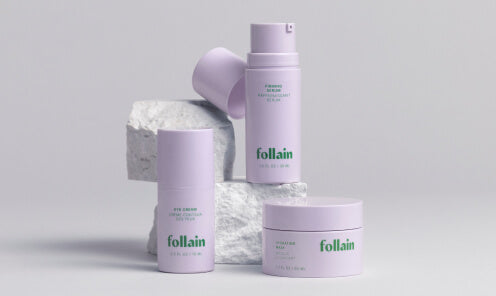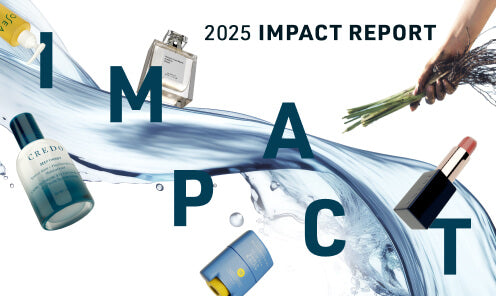We’ve all heard the words: Hyaluronic Acid, Niacinamide, and Retinol… and that’s just for starters. These aren’t just tough-to-pronounce work horses, these are the power ingredients we love because they can literally change the future of your skin for the better.
We’ve always been more than just a pretty face, and we’ve got the powerful punch, and the glowing skin to prove it.
So, let’s meet them. The power ingredients that are changing the way people think about clean beauty.
ACIDS
Hyaluronic Acid
Skin produces Hyaluronic Acid—a water-loving compound that can retain 1,000 times its weight in moisture—naturally. But unfortunately, this decreases as we age. Hyaluronic Acid offers a deep hydration, which can have the effect of filling or smoothing, making skin appear “plump” and “younger.”
AHAs/BHAs
Alpha hydroxy acids (AHAs) and beta hydroxy acids (BHAs) act as exfoliants, turning over dead skin cells. They may also be effective in reducing the appearance of fine lines and wrinkles, and improving overall skin texture. Examples of AHAs and BHAs include:
• Glycolic Acid (the smallest of the acids, which allows it to more readily penetrate skin layers)
• Salicylic acid (and related substances, such as salicylate, willow bark extract)
• Lactic Acid (which is often derived from soured dairy products, as well as fermented vegetables and fruit)
AHAs and BHAs have great skin benefits, but they may make skin more sensitive, so stop using them if they irritate you. (And don’t forget to use your SPF, too). AHAs and BHAs come in different sizes and strengths, so feel free to talk to Credo’s skin experts (in stores or via our Credo Live chat) for help choosing, or talk to a dermatologist if you want more professional advice for your unique skin.
VITAMINS
Niacinamide
Niacinamide is a water-soluble form of Vitamin B3, which may also boost skin’s natural collagen production, giving it a firmer and plumper appearance. Niacinamide is most often used to address concerns around fine lines, dullness, and loss of collagen and elastin. Studies find that it readily penetrates skin and is effective at relatively small amounts, making it an ideal skincare ingredient.
Retinol
“Retinoids” is an umbrella term that includes retinols and other forms of vitamin A found in both prescription medications and cosmetics. In the skin, Retinol (ROL) is oxidized into Retinaldehyde (RAL), which in turn is oxidized into RA, the biologically active form of vitamin A. Skincare products containing ROL and RAL work because once absorbed they are metabolized to Retinoic Acid (RA), which studies show has effectively addresses fine lines and wrinkles and overall skin tone and roughness.
There are natural plant sources of retinol and synthetic sources (retinyl palmitate); both are best used at night since retinol + sunlight may increase sensitivity.
Vitamin C
Vitamin C is a powerhouse antioxidant – including Vitamin C in your diet can help protect against free radical and UV damage. Topically, in personal care products, Vitamin C has long been celebrated for making skin appear brighter, and feel firmer and tighter.
Vitamin E
Vitamin E (or tocopherol) is a fat-soluble antioxidant that's essential for healthy skin. It can absorb the energy from ultraviolet (UV) light, which helps to prevent UV-induced free radical damage to skin. Vitamin E may also have an anti-inflammatory roles, and can help to keep skincare formulas stable.
PEPTIDES
Remember from biology class that amino acids are the building blocks of proteins? Well the step in between is peptides. Peptides are molecules that consist of between 2 and 50 amino acids, whereas proteins are made up of 50 or more amino acids.
The major protein in skin is collagen, but the body slows down collagen production as we age. Since peptides can be absorbed by the skin, the body may boost its own production of collagen peptides when you use peptides topically. The result? Skin looks more plump and revitalized.





















